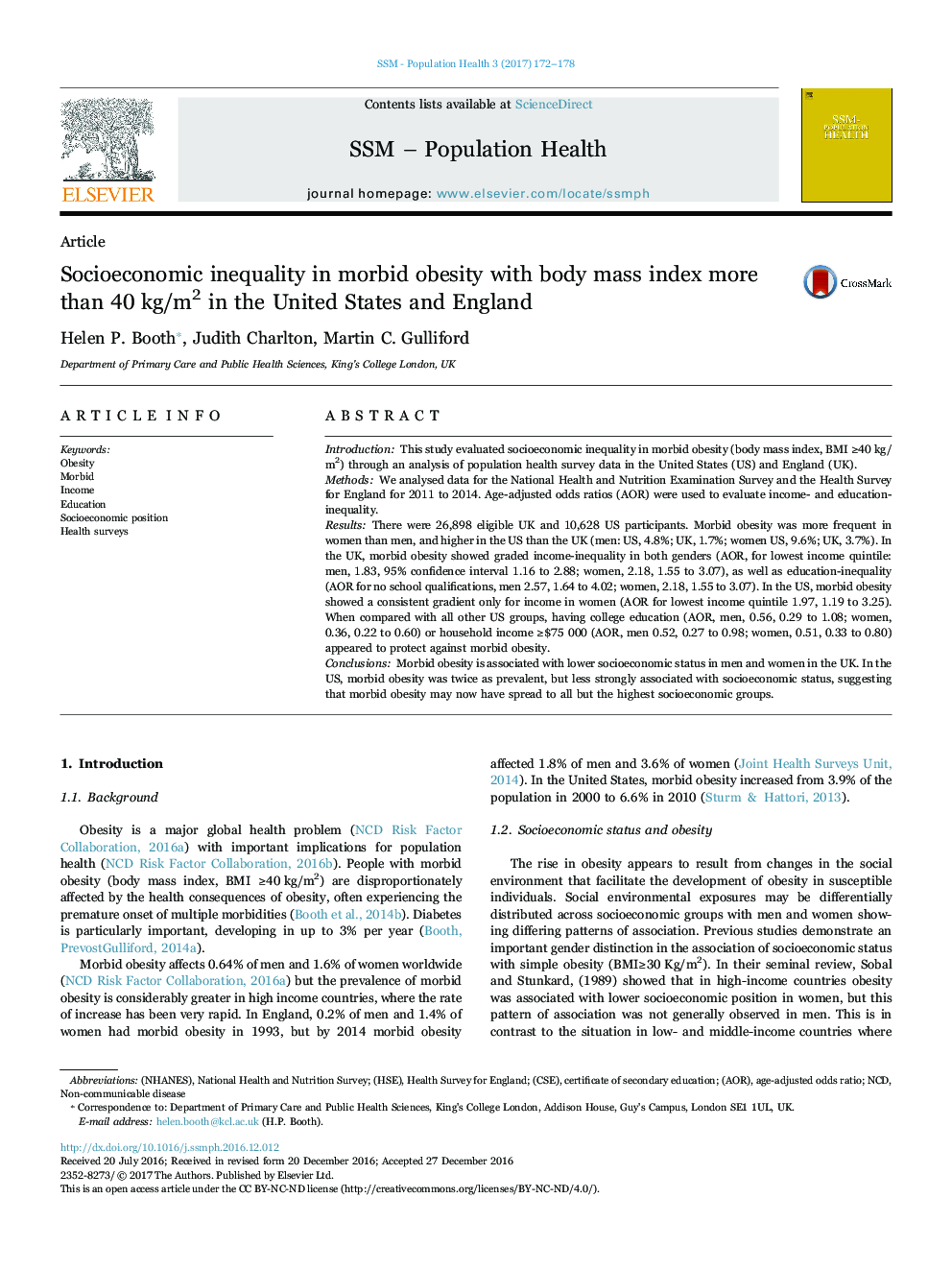| Article ID | Journal | Published Year | Pages | File Type |
|---|---|---|---|---|
| 5123246 | SSM - Population Health | 2017 | 7 Pages |
â¢This study evaluated the socioeconomic patterning of morbid obesity in the UK and US.â¢Inequalities in morbid obesity can be observed in men and women in the UK and US.â¢A graded association between morbid obesity and SES is clearer in the UK than the US.â¢This finding may be explained by different obesity prevalence in the two countries.
IntroductionThis study evaluated socioeconomic inequality in morbid obesity (body mass index, BMI â¥40 kg/m2) through an analysis of population health survey data in the United States (US) and England (UK).MethodsWe analysed data for the National Health and Nutrition Examination Survey and the Health Survey for England for 2011 to 2014. Age-adjusted odds ratios (AOR) were used to evaluate income- and education-inequality.ResultsThere were 26,898 eligible UK and 10,628 US participants. Morbid obesity was more frequent in women than men, and higher in the US than the UK (men: US, 4.8%; UK, 1.7%; women US, 9.6%; UK, 3.7%). In the UK, morbid obesity showed graded income-inequality in both genders (AOR, for lowest income quintile: men, 1.83, 95% confidence interval 1.16 to 2.88; women, 2.18, 1.55 to 3.07), as well as education-inequality (AOR for no school qualifications, men 2.57, 1.64 to 4.02; women, 2.18, 1.55 to 3.07). In the US, morbid obesity showed a consistent gradient only for income in women (AOR for lowest income quintile 1.97, 1.19 to 3.25). When compared with all other US groups, having college education (AOR, men, 0.56, 0.29 to 1.08; women, 0.36, 0.22 to 0.60) or household income â¥$75 000 (AOR, men 0.52, 0.27 to 0.98; women, 0.51, 0.33 to 0.80) appeared to protect against morbid obesity.ConclusionsMorbid obesity is associated with lower socioeconomic status in men and women in the UK. In the US, morbid obesity was twice as prevalent, but less strongly associated with socioeconomic status, suggesting that morbid obesity may now have spread to all but the highest socioeconomic groups.
